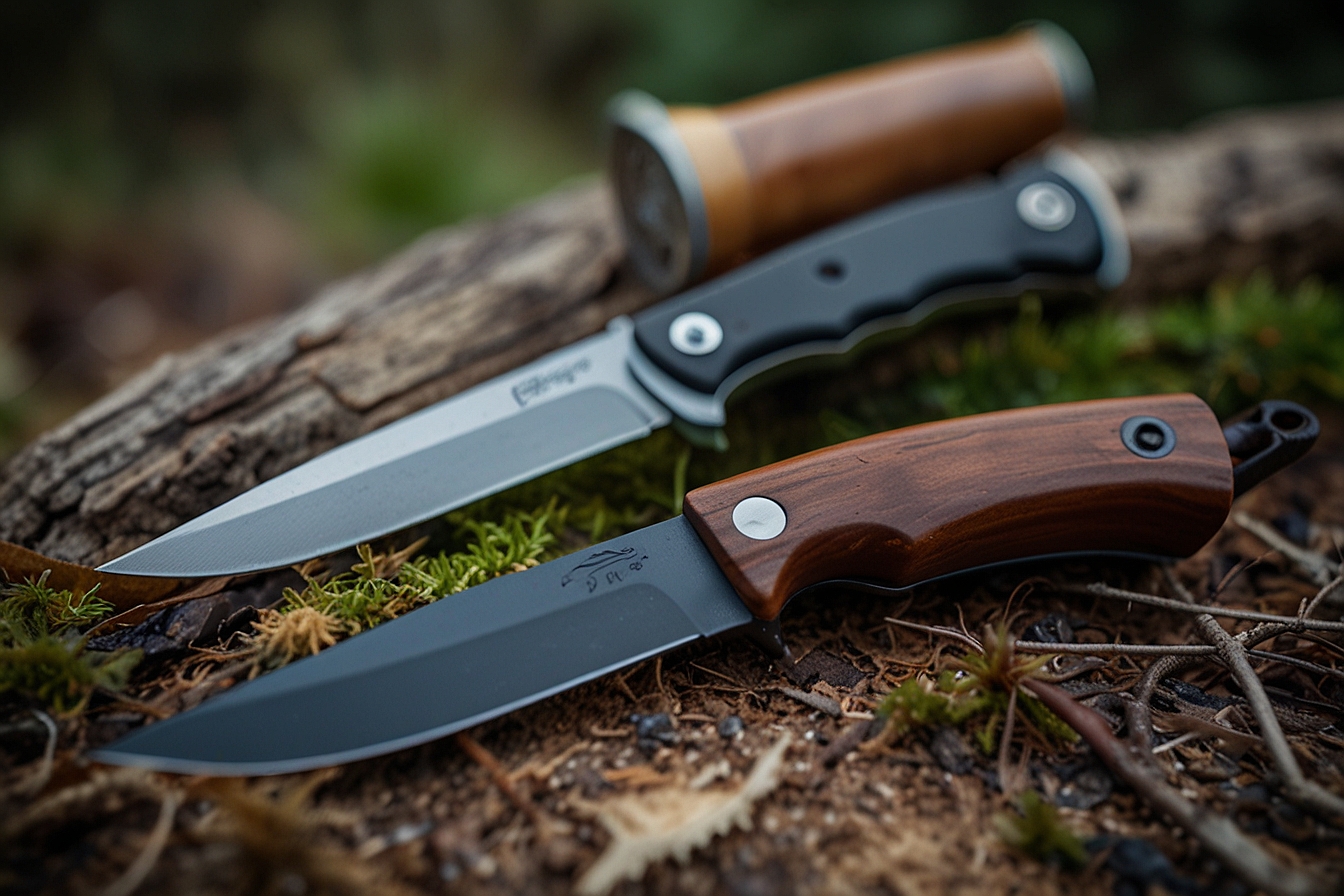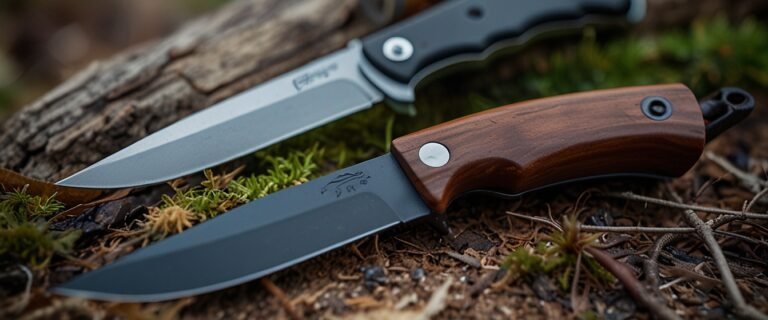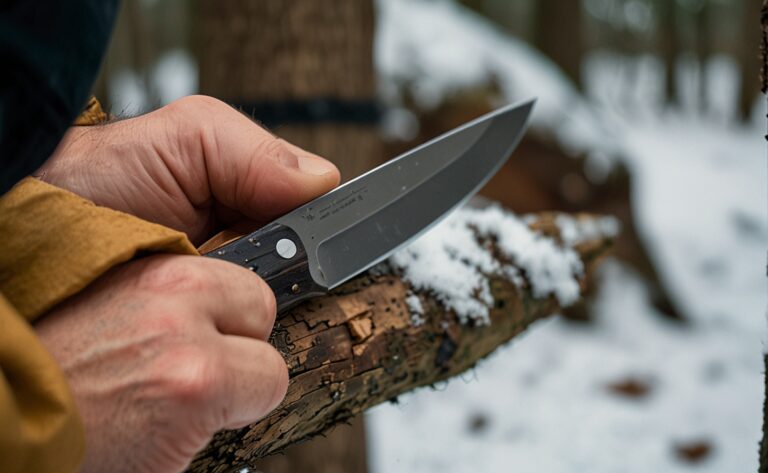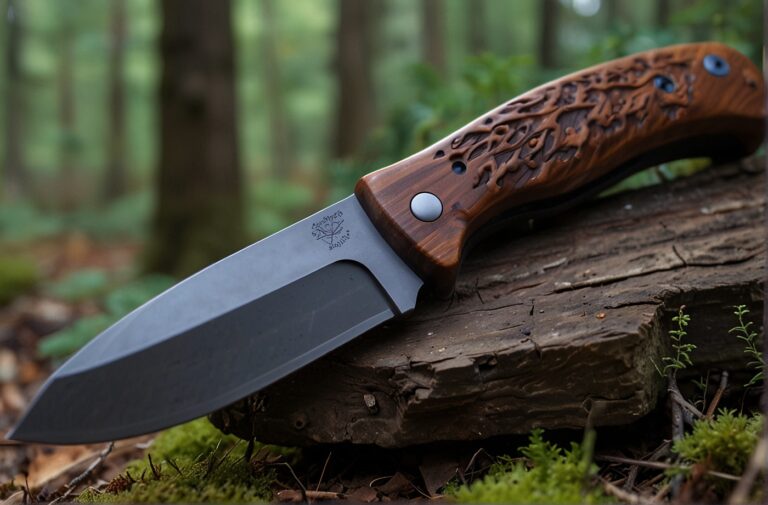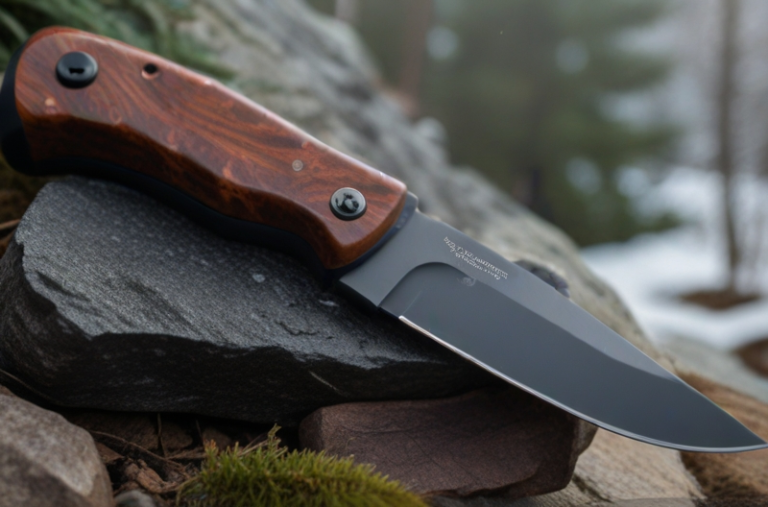Carbon vs Stainless steel
Choosing the right knife for bushcraft activities, one of the primary considerations is the type of steel used in its construction. Carbon steel and stainless steel are two popular options, each with its own set of advantages and drawbacks.
Carbon Steel:
Pros:
- Edge Retention: Carbon steel blades are known for their exceptional edge retention. They can hold a sharp edge for a long time, making them ideal for tasks that require precision cutting.
- Ease of Sharpening: Carbon steel is relatively easy to sharpen compared to stainless steel. This means you can quickly restore a keen edge even when you’re out in the field.
- Durability: Despite being prone to rust, carbon steel knives are generally more durable than stainless steel knives. They can withstand heavy use and abuse without chipping or breaking.
- Traditional Appeal: Many bushcraft enthusiasts appreciate the traditional look and feel of carbon steel knives. They often have a classic appearance that harks back to the origins of outdoor craftsmanship.
Cons:
- Corrosion Susceptibility: One of the biggest drawbacks of carbon steel is its susceptibility to corrosion. If not properly cared for, it can rust easily, especially when exposed to moisture.
- Maintenance Requirements: Carbon steel knives require regular maintenance to prevent rust and corrosion. They need to be cleaned and dried thoroughly after each use and may require oiling to maintain their condition.
- Reactivity: Carbon steel can react with acidic foods, leading to discoloration and metallic tastes. This may not be a significant issue for bushcraft knives, but it’s something to consider if you plan to use the knife for food preparation.
Stainless Steel:
Pros:
- Corrosion Resistance: Stainless steel is highly resistant to rust and corrosion, making it ideal for use in wet or humid environments. It requires minimal maintenance compared to carbon steel.
- Low Maintenance: Stainless steel knives are easy to clean and maintain. They can be washed with soap and water without worrying about rusting, and they don’t require oiling.
- Versatility: Stainless steel is more versatile than carbon steel in terms of its application. It can be used for a wide range of tasks beyond bushcraft, including food preparation and general outdoor use.
- Hygienic: Because stainless steel doesn’t react with acidic foods, it’s a more hygienic option for food preparation.
Cons:
- Edge Retention: Stainless steel blades generally don’t hold their edge as well as carbon steel blades. They may require more frequent sharpening to maintain optimal performance.
- Difficulty Sharpening: Stainless steel can be more challenging to sharpen than carbon steel due to its hardness. Specialized sharpening tools may be needed to achieve a sharp edge.
- Brittleness: Some stainless steel alloys can be more brittle than carbon steel, making them prone to chipping or breaking under heavy use.
In conclusion, both carbon steel and stainless steel have their own strengths and weaknesses when it comes to bushcraft knives. Carbon steel offers excellent edge retention and durability but requires more maintenance to prevent rust. Stainless steel, on the other hand, is corrosion-resistant and low-maintenance but may not hold its edge as well and can be harder to sharpen. Ultimately, the choice between the two will depend on your personal preferences and the specific requirements of your outdoor activities.

